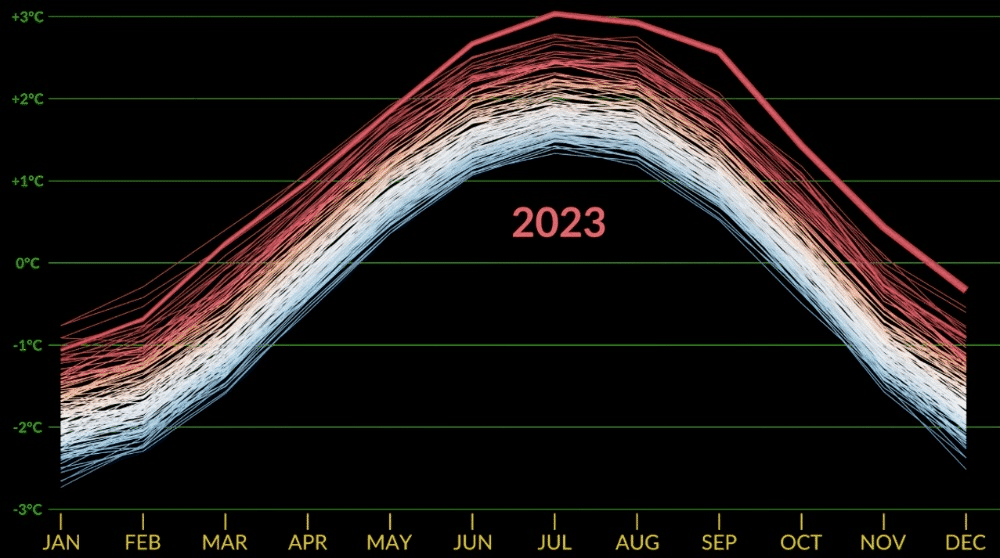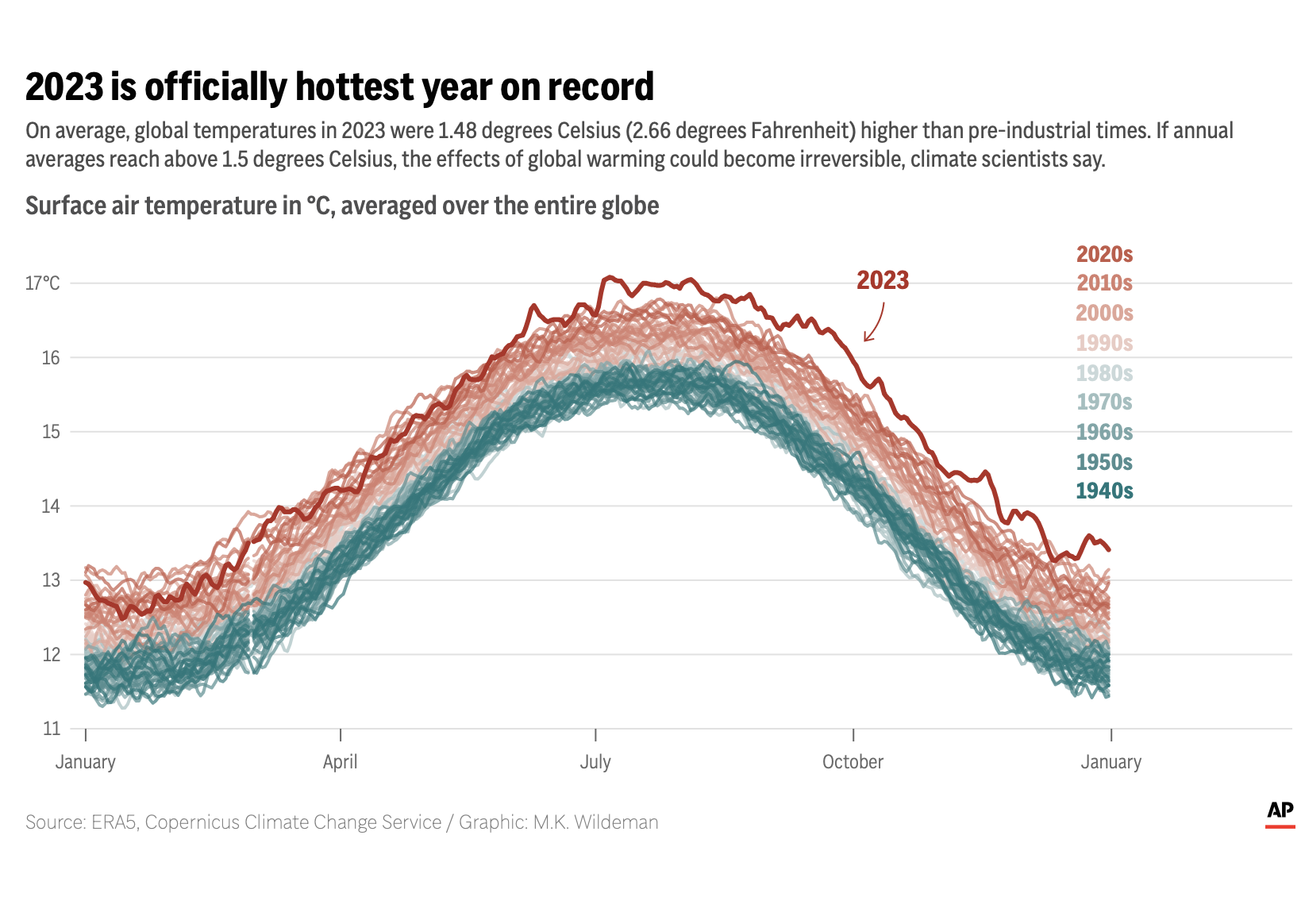
“The heat over the last calendar year was a dramatic message from Mother Nature,” University of Arizona climate scientist Katharine Jacobs told Associated Press.
According to NASA, the global average temperature last year was 1.17ºC (ºF) above the 1951-1980 baseline and 1.39ºC (2.5ºF) hotter than the pre-industrial baseline (mid-19th century, 1850, when records begin).
“We’re frankly astonished,” said Gavin Schmidt, the director of NASA’s Goddard Institute of Space Studies. “The findings are astounding,” Sarah Kapnick, NOAA’s chief scientist, added.
Gavin Schmidt, director of the Goddard Institute for Space Studies at NASA, told The Guardian: ““I am discomfited by the findings beyond just, ‘Oh my gosh, another warm year’.”
He added that 2024 has a “50-50” chance of being the hottest on record, due to a peaking El Niño and that the likelihood of staying within 1.5C warming, which scientists have said is important to avoid catastrophic heatwaves, floods, droughts and other calamities, “has shrunk to almost nothing”.
NOAA (National Oceanic and Atmospheric Administration) reported that 2023 was 0.15ºC (0.27ºF) warmer than the previous record set in 2016 and 1.35ºC (2.43ºF) warmer than pre-industrial temperatures.
According to NASA and NOAA, the 10 years from 2014 to 2023 are the hottest 10 years they have measured.
On Friday, Berkeley Earth reported that 2023 was 1.54ºC (2.77ºF) above pre-industrial measurements. This exceeds the 1.5ºC (2.7ºF) “warming limit that countries have agreed to keep to in order to avoid disastrous global heating impacts.”
The burning of fossil fuels and deforestation has driven the extraordinary warmth, which follows a string of hotter-than-average years in recent decades. Each decade over the past 40 years has been warmer than the last, Noaa said, with the most recent 10 years all making up the hottest 10 years ever recorded. Last year’s record heat was further spurred by El Niño, a periodic climatic event that heats up parts of the Pacific Ocean and heightens global temperatures.
Also on Friday, the World Meteorological Organization reported that 2023 was 1.45ºC (2.61ºF) warmer than pre-industrial temperatures.
Earlier this week, the European Centre for Medium-Range Weather Forecasts (ECMRWF) announced that global temperatures had set new records during calendar 2023.
“I do not consider it realistic that we can limit warming (averaged over several years) to 1.5C,” Woodwell Climate Research Center scientist Jennifer Francis told AP in an email. “It is technically possible but politically impossible.”

~~~
As I type these words, the greater Seattle area is experiencing far lower than normal temperatures. Climate change does not mean universally hotter.
Very cold conditions remain in place across western Washington this afternoon with widespread temperatures ranging from 15ºF to 25ºF as of 100 pm… Another cold night is expected across the region with temperatures in the teens.
- Our average high on 13 January: 46ºF.
- Our average low on 13 January: 40ºF.
The low this morning (shortly after midnight): 14ºF.
.
Talk to me: Facebook | Mastodon | Twitter
Known for gnawing at complex questions like a terrier with a bone. Digital evangelist, writer, teacher. Transplanted Southerner; teach newbies to ride motorcycles. @kegill (Twitter and Mastodon.social); wiredpen.com
















